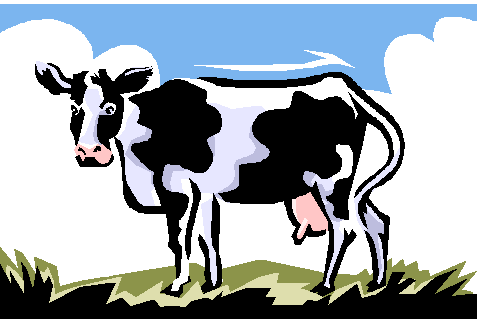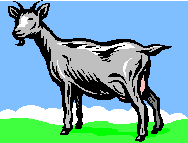 Grass Chompers
Grass Chompers Grass Chompers
Grass Chompers
Plants store
sugars (carbohydrates) in different forms to animals – this is one of the
things that makes plants so much less fattening than animal products – the
energy is there but cannot be broken down directly by animals.
This is where bacteria come in. Bacteria live all over our body and especially in the gut. Some animals (aall those that only eat grass, leaves and other fibrous plant material) have bacteria that can break down the starch and cellulose into fatty acids that can be used by the animal to make amino acids and other essential products.
Animals that have bacteria that can break down cellulose can use fibrous plants as food
Animals without bacteria that can break down cellulose cannot use fibrous plants as food
The animals that are able to gain nourishment from plants with the aid of bacteria can do so as they have more than one stomach. Cows and similar animals are called ruminants as they have a complex intestinal arrangement with several compartments often referred to as stomachs. One of the compartments, preceding the true stomach (abomasum) is called the rumen and in here the food is mixed with saliva and the bacteria that can degrade cellulose. From here goes to the reticulum where it is turned in to cuds that are regurgitated so the animal can chew the plant material further (‘chewing the cud’). This material is re-swallowed and this time travells into the abomasum to be subjected to normal digestion processes.

Picture taken from Biological Science (R. Soper, 1996)
It is not
only mammals that can do this. At least one bird can too – locals in Venezuela
call it the stinky cowbird, due to its cow-like smell. This is due to the
bacteria making gasses similar to those of a cow. In this case the bird’s
oesophagus (throat) and crop act as the rumen does in cows and sheep.
The bacteria
that aid the cowbird are not just good at digesting grass, they can also
detoxify powerful plant poisons called alkaloids – these are a major plant defense
mechanism against animals and the ability to eat such plants gives the stinky
cowbird a greater range of possible food.
 A
similar ability to this has been used in Australia to allow goats and sheep to
eat the leaves of the Leucaena tree, which are normally poisonous to
these animals. This tree is widely grown in Australia as it is fast growing and
its leaves are packed with nitrogen. This makes them good for the ground when
they fall and decompose. It was discovered in the 1980’s that Hawaiian goats
could eat the leaves without harm and the bacterium responsible was isolated and
put into the rumen of other goats and sheep. Once it had been allowed to grow in
numbers, it allowed the animals to safely eat the leaves that were once
poisonous to them.
A
similar ability to this has been used in Australia to allow goats and sheep to
eat the leaves of the Leucaena tree, which are normally poisonous to
these animals. This tree is widely grown in Australia as it is fast growing and
its leaves are packed with nitrogen. This makes them good for the ground when
they fall and decompose. It was discovered in the 1980’s that Hawaiian goats
could eat the leaves without harm and the bacterium responsible was isolated and
put into the rumen of other goats and sheep. Once it had been allowed to grow in
numbers, it allowed the animals to safely eat the leaves that were once
poisonous to them.
t Back Return to Introduction Next u